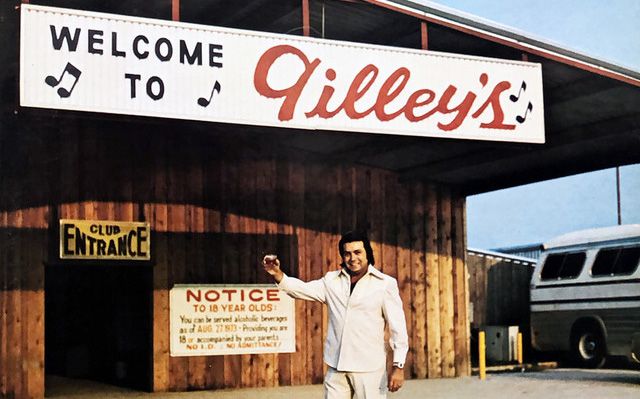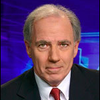You See By My Outfit That I'm Not a Cowboy
We watched the bullriders, and I decided against it. I saw what the operator could do to someone they wanted to embarrass. Put your cat in a blender and you'll get the idea.

Learning of the death of our own home-grown country star Mickey Gilley reminded me of a couple of stories. Now, he wasn't actually home-grown in Texas, but it is where his legendary namesake nightclub was located, and that's close enough for me, a member of the fake news brigade.
The shorter story is one told to me by the late, great music critic for the late great Houston Post, Bob Claypool. Some folks may not be aware that Mickey was the first cousin of the hell-raising rock and roller Jerry Lee Lewis, and the smarmy televangelist Jimmy Swaggart.
When Jerry's Mom died, cousin Jimmy was asked to hold the funeral service. According to the story Mickey told Bob, it was a real performance, culminating in an altar call. Yes, an altar call at a funeral. Swaggart kept pointing out that there were those in the audience who had lived lives of sin, debauchery and general fun and needed to come down and confess. Mickey said everyone knew who he was aiming for, and it went on for several uncomfortable minutes.
Then to a collective exhale from the room, Jerry Lee got up slowly and went down, knelt and talked with Jimmy. When he got back to his pew, Mickey said the sermon must have really gotten to him. Jerry replied, "No. But if I didn't go down there, he was never going to shut up."

In 1981, an old friend, Kay Maughan, became the features editor for a new magazine called Texas Country. I was News Director at KRIV-TV at the time, and we were talking one day about her new gig. She asked if I would be willing to contribute something for the magazine, and I told her I wouldn't know what to write. I just wasn't a fan. When doctors ask if I'm allergic to anything I generally answer Porter Waggoner.
Now, it was the era of Urban Cowboy, feathered hat bands and most of all, Gilley's nightclub. I laughed and told her I even grew up in Pasadena and had never set foot in the place. She lit up and said, write about that, and then go to the club and write a follow up. OK, that sounded like it could be fun, and frankly, it was. It also showed me what a horrible snob I had been.
She asked if I had any idea how we could illustrate the story. I suggested going in a blue blazer, rep tie, sweater vest, pleated slacks and loafers, then photo by photo, transitioning to the hat, pearl button shirt, big belt buckle, jeans and boots. I began with a snifter of brandy in my hand and it became a long neck. An Urbane Cowboy, as it were.

I won't bore you with the whole article but to set the scene, I talked about my upbringing with a father who had played drums in his youth and worshiped jazz. The club was originally called Shelley's and was run by a local character named Sherwood Cryer. It and the Nesadel Club were places where a middling popular singer named Mickey Gilley would pack the place. He and Cryer struck a deal, and Shelley's became Gilley's. From the article...

"It was not the kind of place that would put up with a punk like me and any wrong look would be greeted with a mouthful of country boy knuckles. Shelley's was not my kind of place. Besides, my tastes ran to classier pursuits. I was not the kind of guy to take a girl to some country bar, listen to bad music, drink lousy Texas beer and try to jump her bones in a pickup. No sir, I took them to a coffee house in Houston, listened to bad folk music, drank bottom-of-the-pot coffee and jumped her bones in a cramped VW."
"They were kickers, goat ropers, hicks and rubes. They didn't know what was cool. They had no idea of what was fashionable, classy or current. The clothes were funny and I, for one, wouldn't have been caught dead going to one of their night clubs to listen to that nasal music. Well, dammit, now the sons of bitches are in! What do I do now? Those clothes I thought were funny in sixty-five are the cutting edge of fashion now."
"Everyone from actors from the Bronx to male hair stylists in LA are wearing cowboy clothes. Urban Cowboy is a hit with a generation who probably think Urban is somewhere near Victoria. The top television show is a badly acted piece of fluff set in Big D. Bum Phillips is a trend setter, though not enough to keep his job. Vogue magazine does layouts with skinny models who look like Dale Evans on dope. In other words, where did I go wrong?"

I wrote about my picture of myself being the product of Hemingway, Fitzgerald and Fleming. Racing through the south of France in a Bentley smothered by some willowy blond. Well, I had the sports car, an MG, and the blond, but the rest, well...
But then I found, by '81, I was mellowing in my judgments.
"I still like good champagne and jazz, but lately, I find a sinister idea invading my thinking. I have this incredible curiosity about Gilley's. I know, I know. I've spent most of this article bad mouthing it, but I can't help it. Call me inconsistent, call me fickle, call me a cab, but I want to see the place."
And at that point, the follow-up article "Life After Gilley's" began.
The magazine arranged for me to visit Harold's Menswear to pick up my country duds, and so, "With my country clothes in my hands, and my City clothes on my bod, I arrived and met Kay and our guide. His name was Don, but everyone at Gilley's simply called him Cowboy. I figured no one would give me any grief while with a guy named Cowboy. I'm not sure what I expected; not actual violence, but just to be the special guest wimp for the evening."

"Let me say up front, I had a hell of a good time at the club. No, club isn't the right word. It is more of a third world country with a band. I'm talking big, folks. I started planning the things I wanted to try. Ride the bull, guzzle beer, ride the calf roping machine, yell 'Bullshit,' and guzzle more beer. I read the Urban Cowboy article by Aaron Latham in Esquire Magazine, and saw the movie made from it. I grew up in Pasadena. I like Gary Cooper movies. I am a Texan. I had a hat. I'd be OK."
"As we walked in the place, I first noticed a sign that read, 'Please check guns, knives, knucks and other weapons at the door.' I froze. This place must be full of people with enough of those things to make the sign necessary. A big bouncer with a hearing aid looked at me. He was puzzled. He had hands you could sit in and looked like he smelled something funny. I was in a navy blue blazer and gray wool slacks. I loosened my tie hoping to look more casual. He kept staring at the western clothes in my hands."
"'Why are you carryin' them boots and not wearin' them?' Well, I had an answer for that one. 'Beats me.' He backed away at that point and my clever riposte had saved the day once again. We made our way across the dance floor and people kept staring. I stuck out like Raquel Welch at the Boy Scout Jamboree."
Now at this point in the article, I had relaxed a bit and took it all in.
"Then our photographer arrived and set up his lights and reflectors at the bar. The results you can see with this article. Now, I'm on TV and am used to performing, but here, I felt dumb. I mean serious, big time dumb. The guys in the photos didn't know me from Adam. The girls were friendly, lovely and with someone else."

"When the photos were done, Cowboy took us on a tour. We watched the bullriders, and I decided against it. When I figure it's time to look like a complete ass, I try to keep the group as small as possible. And I saw what the operator could do to someone they wanted to embarrass. Put your cat in a blender and you'll get the idea."
"Gilley's is big. In any given area people are clustered in pools of smoky light, dancing, eating, bullriding, pinballing. lining up at the bar or shooting pool. It's like eight or nine small clubs all shoved together. The house band was dynamite. My dancing was respectable, and the evening ended late and reluctantly. Cowboy finished the night with the hoedown dance he did in the Urban Cowboy movie and I was worn out just watching. We said our goodbyes to Sherwood, Gator, Killer and the rest and left."

"So, OK, I liked it. My lifelong illusions were shattered. I wasn't really scared. There were probably 3000 people in a room that could hold 6000, and I saw at least 2 or 3 guys I could whip and at least twice as many women."
I ended the piece with an invitation for all my fellow snobs to give it a try.
"You'll have a good time. There is life after Gilley's. And if there is such a thing as reincarnation, I want to come back to life in Gilley's, as Dolly Parton's guitar."

The club was a go-to spot from 1970 to 1990 and Mickey himself headlined when he was in town. It also had a shooting gallery, showers for truckers and a rodeo arena. Guinness listed it as the world's biggest honkey-tonk. Eventually Mickey and Sherwood had a falling out and as those things usually go, they fell out in court. Mickey took over the club but it didn't last. It was closed by the judge in 1989 and destroyed in a suspicious fire in 1990. Gilley opened a new place in that sad excuse for a Texas town, Dallas. It has prospered, but now its guiding spirit is gone. It's more like an Epcot version of the original. He had hoped to reopen a place back in Pasadena, but never put the investors together.
So, farewell, Mickey. Room Full of Roses, All the Girls Look Prettier at Closing Time and all the other hits will remain. And I'll always treasure the time I was the only guy dressed as a pathetic, 1980s preppy to grace the bar at the original Gilley's.
